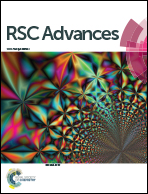Effect of chemical structure of elastomer on filler dispersion and interactions in silica/solution-polymerized styrene butadiene rubber composites through molecular dynamics simulation
Abstract
The dynamic properties, filler–rubber interactions, and filler dispersion in silica/solution-polymerized styrene butadiene rubber (SSBR) composites with various chemical structures of SSBR were studied through molecular dynamics (MD) simulation. The structures of SSBR studied were non-modified, star-shaped, and in-chain modified by different contents of 3-mercaptopropionic acid. The mean square displacement (MSD), binding energy, glass transition temperature (Tg), and radial distribution function g(r) of filled SSBR models were investigated. We found that there was an optimum modifier content (14.2 wt%) at which the silica/SSBR composite had the lowest self-diffusion coefficient, the highest binding energy, and the best silica dispersion. The competing effects of hydrogen bonds, steric hindrance of 3-mercaptopropionic acid and rubber–rubber interactions led to the existence of this optimum modifier content of 14.2 wt%. Furthermore, the star-shaped SSBR as well as in-chain modified SSBR had strong interactions with the silica dispersed uniformly in the rubber matrix. The modeling results were in good agreement with our previous experimental results.


 Please wait while we load your content...
Please wait while we load your content...